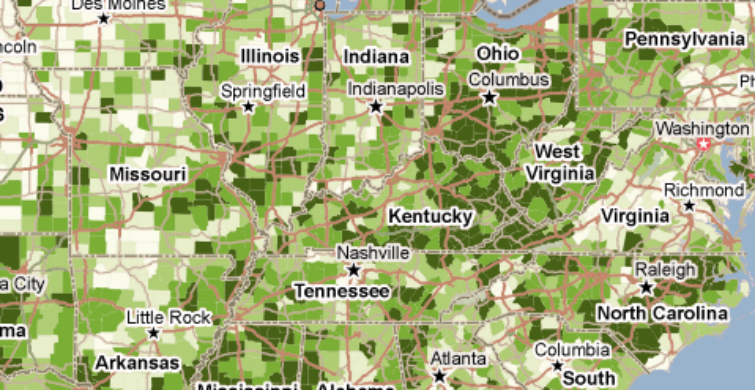Our Medicare Data is in Good Health!

Data
Medicare Fee-for-Service Beneficiaries
Source
Find on PolicyMap
- Health
- Health Insurance
- Medicare
More than 34 million people in the United States are covered by the Medicare fee-for-service (FFS) program, about 10% of the total population. Under this program, older Americans (over the age of 65) and other eligible individuals have access to services and supplies that are medically necessary to treat a disease or condition. As portions of the Affordable Care Act are taken to court and as health care takes center stage on the platforms of the presidential candidates, the national spotlight continues to shine on the topic of health insurance. It is crucial that our Medicare data stays current amidst these conversations.
We here at PolicyMap are excited to share the recent update to our data from the Centers for Medicare and Medicaid Services (CMS)! The data on PolicyMap now reflects the latest figures available through 2014 for the Medicare fee-for-service (FFS) population including demographics, costs, and utilization. On top of that, we have added more indicators on the chronic conditions diagnoses of Medicare beneficiaries. In addition to looking at the Medicare population by age, sex, race, ethnicity, cost and utilization, you can now explore 14 different chronic condition indicators from Alzheimer’s disease to Stroke. A FFS Medicare beneficiary is considered to have a particular chronic condition if there is a CMS claim that they received a service or treatment for that condition. These indicators can be found under the Health tab in the Health Status: Medicare and Chronic Conditions: Medicare Population section and in the Health Insurance: Medicare section.
All of this data captures the utilization and costs of health care services for the Medicare FFS population. But wait, who is a FFS Medicare beneficiary? He or she is one with both Part A and Part B coverage for the full portion of the year that they are covered.
Hold up, what is all this lingo?! Part A? Part B??
Part A in a Medicare plan covers costs involved with the hospital, such as hospital care, hospice, and nursing home care. And Part B covers the medical services from physicians to outpatient care. This captures the majority of the issues that people need coverage for in the Medicare program.
The wealth of Medicare data that are now available on PolicyMap can be useful for many purposes. For example, in the conversation about quality health care and rising medical costs, it’s helpful to take a look at the geographic spread of the rate of emergency room visits by Medicare FFS beneficiaries. From as far back as 2007 to 2014, the emergency room visit rates have been highest in the rural Midwest and in the Southern states.
As quality health care and health insurance continue to dominate the national discourse, you can be sure to count on PolicyMap to keep our finger on the pulse of the most detailed and up-to-date Medicare data.